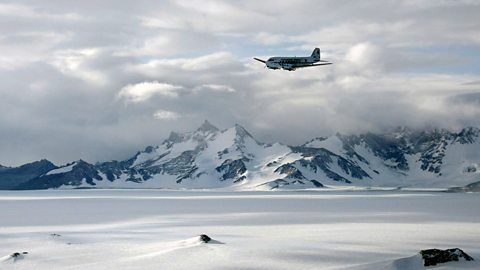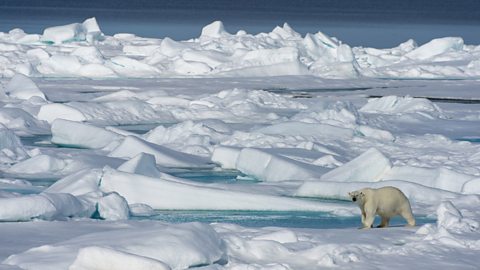Characteristics of Antarctica and the Arctic
Antarctica is a continent surrounded by ocean, while the Arctic is an ocean surrounded by continents.
Exploring the characteristics of cold environments and the threats that these areas face
Antarctic
Land and sea
- Continent covered by an immense ice capsA large area of land covered in ice. and surrounded by the Antarctic Ocean
- Mountains up to 3,794 metres high
- Ice 4.5 km thick in places
Climate
- Very cold due to lack of direct sunlight
- Temperatures average -28┬░C in summer and -60┬░C in winter
- Dry
Flora
- Almost no vegetation - mostly lichens
Fauna
- No terrestrial mammals
- Penguins, seals and whales
Human activities
- Scientific bases
- Tourist visitors
The future
- Threats from climate changeThe long-term alteration of weather patterns.
- Extraction of oil, gas and metals

South Pole
Arctic
Land and sea
- Not a land continent
- Ocean surrounded by continents with large islands, eg Greenland, Ellesmere Island
- Ice reaches height of 2 to 3 metres
- Sea pack ice
Climate
- Cold due to lack of direct sunlight - but not as cold as Antarctica
- Temperatures average 0┬░C in summer and -40┬░C in winter
Flora
- Low shrubs, sedges and grasses, mosses and liverworts
Fauna
- Polar bears, Arctic fox, reindeer and wolves
- Seals, whales and bird species
Human activities
- Human population north of 60┬░N greater than 4 million people
- Many indigenous people - Inuit, Sami and Yupik
- Mining activities
The future
- Threats from climate change
- Extraction of oil and gas and other resources
- Claims of sovereignty

North Pole